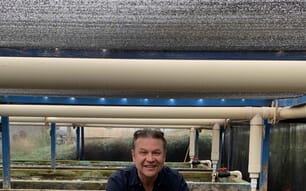Marylands oyster partners have developed and implemented a robust oyster restoration program over the last decade that has resulted in over three billion oyster spat on shell produced and planted on 1,500 acres. With a recent expansion of its setting facility, the University of Marylands Horn Point Hatchery (UMD HPL) -- the largest oyster hatchery on the East Coast -- together with the Oyster Recovery Partnerships logistics capability, are now able to produce and plant between one and two billion oyster spat on shell per year.
ORP is thrilled to play a role in the largest oyster restoration effort our Bay has ever seen, said Stephan Abel, Executive Director of the Oyster Recovery Partnership. Our resolve to restore the Bay remains steady, but the building enthusiasm surrounding this planting season is unprecedented.
As part of a Maryland Governor Martin OMalleys Oyster Restoration and Aquaculture Development Plan, the Army Corps of Engineers Native Oyster Restoration Master Plan, and President Obamas Executive Order 13508, Harris Creek, a tributary of the Choptank River, is the first river targeted for large-scale, tributary-based oyster restoration. This area was chosen collaboratively by the Maryland Department of Natural Resources (DNR), Army Corps Baltimore District, and the National Oceanic and Atmospheric Administration (NOAA) because of its high likelihood to succeed.
The same team is developing a scientific blueprint to guide restoration in Harris Creek. The goal is to restore 300-600 acres, of which nearly 100 acres will be planted by the end of this planting season. The Army Corps is also scheduled to plant 20 acres of new shell and stone substrate to enhance the river bottom to support the new oyster reefs. Restoration is expected to take between two to five years at current funding levels. Funds for these restoration activities are provided primarily by DNR, the Army Corps and NOAA.
Additionally, the first agreed-upon definition of a restored oyster reef has been adopted by the Sustainable Fisheries Goal Implementation Team based on recommendations from the Oyster Metrics Team, a Bay-wide group of scientists and fishery managers. Specifically, six years post-restoration activity, reefs should have a minimum of 15 oysters and 15 grams of biomass per square meter covering at least 30 per cent of the reef, with at least two year classes of oysters on each reef. Recent investigations by private and university scientists show that bars planted with spat on shell oysters have greater densities of live oysters compared to natural reefs. These high densities persist for many years after planting.
Oysters are an essential ingredient for Chesapeake Bay restoration and the stars may have aligned just right this year, said Mr Abel. We know that we are successful at building oyster reefs, now we are just refining the formula to do more with less.
In addition to its large-scale oyster recovery activities, the Oyster Recovery Partnership operates the Shell Recycling Alliance which has helped recycle nearly 15,000 bushels of shell, supports the Marylanders Grow Oysters program and provides aquaculture and wild fishery support services.
ORPs restoration partners are paramount to the programs success and include the Marylands Department of Natural Resources, University of Maryland Center for Environmental Science (UMCES), NOAA, University of Marylands Paynter Lab, Maryland Watermans Association, ACOE, Chesapeake Bay Foundation, National Fish and Wildlife Foundation and The Nature Conservancy. During the 2011 Season, the Oyster Recovery Partnership and UMD HPL produced and planted 510 million disease-free, native oyster spat on shell on over 315 acres in 6 tributaries and processed more than 70,000 bushels of oyster shell. This was the fourth year that over 500 million oysters were produced by the UMD Horn Point Lab hatchery facility in Cambridge, MD.
The importance of our partners efforts cannot be overstated, said Mr Abel. Each partner is necessary to achieve our Bay restoration goals.
Marylands Chesapeake Bay Oyster Plantings Begin
US - The Oyster Recovery Partnership (ORP), with its coalition of partners, has announced the start of their 2012 Chesapeake Bay oyster planting season and the first plantings aimed at fulfilling the goals of President Obamas Executive Order to restore oyster habitat and populations in 20 Bay tributaries by 2025.
by Lucy Towers



